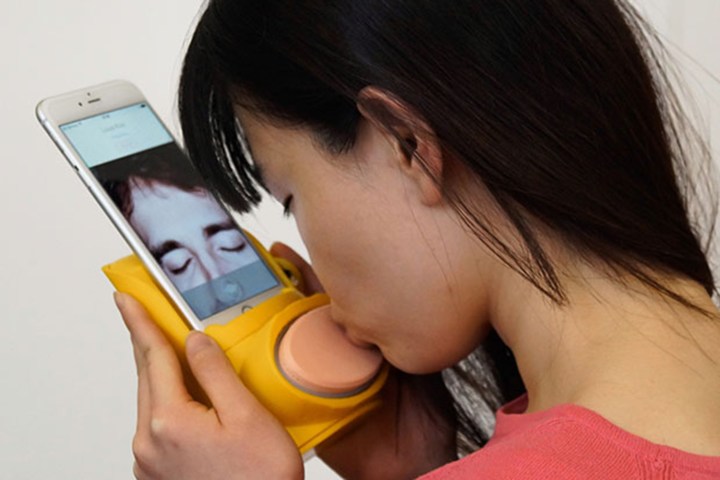
A new device called Kissenger hopes to bridge the gap separating long-distance loved ones. Developed by researchers in Adrian David Cheok’s Imagineering Lab and Imagineering Institute in Iskandar, Malaysia, Kissenger simulates a kiss using pressure sensors and actuators, while users are video chatting through an iOS application.
“The Kissenger device was built for people to better express intimacy and emotion remotely through internet kissing,” Emma Yann Zhang, a PhD student at City University London, told Digital Trends. “It aims to fill in the missing dimension of touch in traditional digital communication, which largely focuses on verbal and audio information. We believe that physical touch is the most important channel to communicate one’s emotions and to maintain close relationships with your loved ones on the other side of the world.”
Kissenger isn’t the first of such devices to emerge from the Imagineering Lab. Cheok’s past projects have included the Huggy Pajama and RingU, both of which digitally transmit the sensation of touch from one wearer to another.
To be sure, these devices aren’t exclusively designed for couples. Zhang insists families could benefit from the added affection as well. And it apparently isn’t limited to human-human interaction, either.
The researchers demonstrated Kissenger last month at the Love and Sex With Robots conference in London, where experts and enthusiasts discussed the growing implications of sexualized androids. In that vein, the Imagineering Lab is also planning to integrate the device into a kissing humanoid robot with interactive lips. “With new types of technologies and interfaces that enable physical intimacy between humans and robots,” Zhang said, addressing a subject that remains controversial, “I believe that we can form more humanistic and intimate relationships with robots.”
For now the researchers are looking for commercial partners and investors to bring Kissenger to market so you too can soon smooch your long distance partner.


